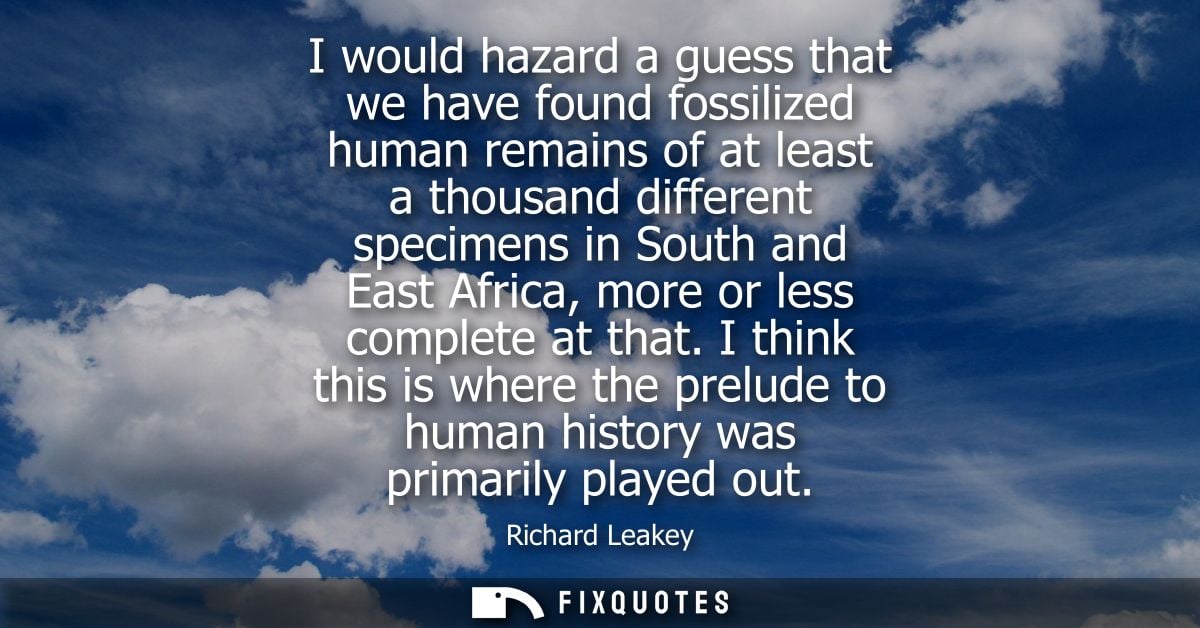"I would hazard a guess that we have found fossilized human remains of at least a thousand different specimens in South and East Africa, more or less complete at that. I think this is where the prelude to human history was primarily played out"
About this Quote
Richard Leakey’s observation draws attention to the profound significance of South and East Africa in the story of human origins. The estimate of “at least a thousand different specimens” found emphasizes the abundance of fossilized remains that have surfaced in these regions over decades of prehistoric research. Leakey emphasizes the completeness of these fossils, “more or less complete”, suggesting that the remains are not only abundant but also sufficiently preserved to allow detailed reconstructions and analysis. These remains are not isolated fragments but constitute a continuous and compelling record of early hominid life.
The phrase “prelude to human history” underscores the idea that before written records, before civilization as we know it, the critical biological and behavioral developments that shaped our ancestors occurred on the African continent. South and East Africa have yielded discoveries like Australopithecus afarensis (“Lucy”), Homo habilis, and other key transitional forms. These finds chart the course from early bipedal apes to the first toolmakers, to beings capable of complex social interaction, adaptation, and eventually migration. Leakey, himself a renowned paleoanthropologist, is thus reinforcing the scientific consensus that Africa is the cradle of humanity, the primary stage where our anatomical and cognitive distinctiveness as Homo sapiens unfolded.
Furthermore, his statement reflects a deep respect for the fossils themselves, each one representing an individual who once lived, grappled with the challenges of survival, and contributed genetically and culturally to the unfolding human story. The extensive fossil record in South and East Africa offers researchers an unprecedented window into evolutionary processes across millions of years. Through painstaking excavation, analysis, and comparison, scientists can trace not only the physical evolution of our species but also infer patterns of movement, adaptation, and environment. Leakey ultimately frames this region as the foundational landscape in the epic of human development, a place where the earliest chapters of our shared heritage were written.
More details
About the Author

